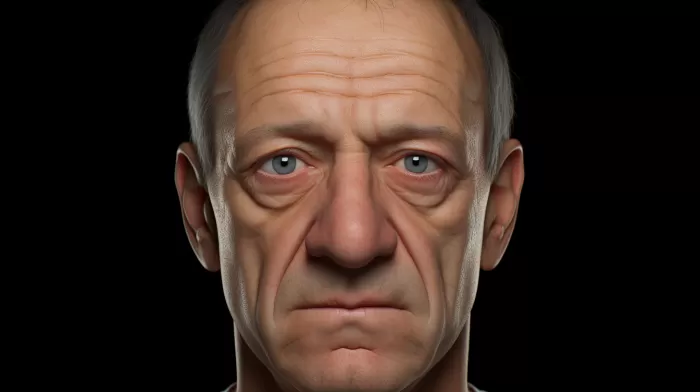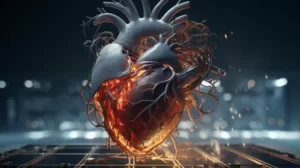You’re probably wondering how the aging signs on your ears, eyes, and scalp can possibly tell you something about your heart. Well, bear with me here as we dive into the findings that revolutionized the way we can identify early signs of heart disease.
Recent studies have shown a connection between our physical appearances and the risk of developing heart disease. Specifically, researchers have found that some visible signs, such as receding hairline at the temples, bald head on top, ear lobe creases, and yellow fatty deposits on the eyelids, are linked to a higher likelihood of developing heart problems.
To understand how these aging signs can serve as early indicators of heart issues, let’s examine a study involving 1,000 participants. The goal of this study was to explore the differences between the subjects’ biological and chronological ages.
Dr. Anne Tybjaerg-Hansen, a researcher from the University of Copenhagen in Denmark, explained that looking older than one’s age might suggest poor cardiovascular health. However, it’s essential to understand that not all visible signs of aging indicate an increased risk for heart disease.
In this study, the wrinkles on the body and face as well as gray hair were considered normal signs of aging. Consequently, no significant correlation was found between these signs and heart disease risk.
On the other hand, participants who displayed three out of four of the previously mentioned aging signs (receding hairline at the temples, bald head on top, ear lobe creases, and yellow fatty deposits on the eyelids) had a 57% increased risk of developing heart disease. Among the four signs, yellowish eyelid bumps, which can be an indication of cholesterol buildup, were associated with the highest risk.
Now that we know how the ears, eyes, and scalp can be early warning signs for heart disease, let’s explore in-depth how these aging signs relate to our cardiovascular health.
Receding Hairline and Baldness
The link between hair loss and heart disease may be hard to fathom at first, but researchers have found that hair loss, specifically a receding hairline at the temples and a bald head on top, can indicate a higher risk for heart disease. This is because hair loss may signify an underlying condition, such as hormonal imbalances, that can adversely affect heart health. Additionally, factors like stress and inflammation, which contribute to hair loss, can also play a role in heart disease.
Ear Lobe Creases
Earlobe creases, commonly known as Frank’s Sign, are diagonal lines that run from the bottom of the earlobes to the top. At first, these creases might seem unrelated to heart health; however, some researchers believe that they can indicate poor blood flow due to cardiovascular issues. Consequently, the presence of earlobe creases can suggest an increased risk of heart disease.
Yellow Fatty Deposits on the Eyelids
Yellow fatty deposits on the eyelids, medically known as xanthelasma, can be a symptom of high cholesterol levels. High cholesterol levels can lead to atherosclerosis, a condition where arteries become clogged by fatty deposits. This could explain why subjects with yellow fatty deposits on their eyelids had the highest risk of heart disease.
In conclusion, while looking in the mirror, pay close attention to how your ears, eyes, and scalp appear. If you happen to discover any of the mentioned aging signs, it might be wise to discuss them with a healthcare professional. Remember, early detection is key to managing heart disease risk factors and ensuring better long-term cardiovascular health.
Stay proactive about your heart health and don’t ignore these potentially warning signs of heart disease! The earlier you take action, the better equipped you’ll be to maintain a healthy heart for years to come.



